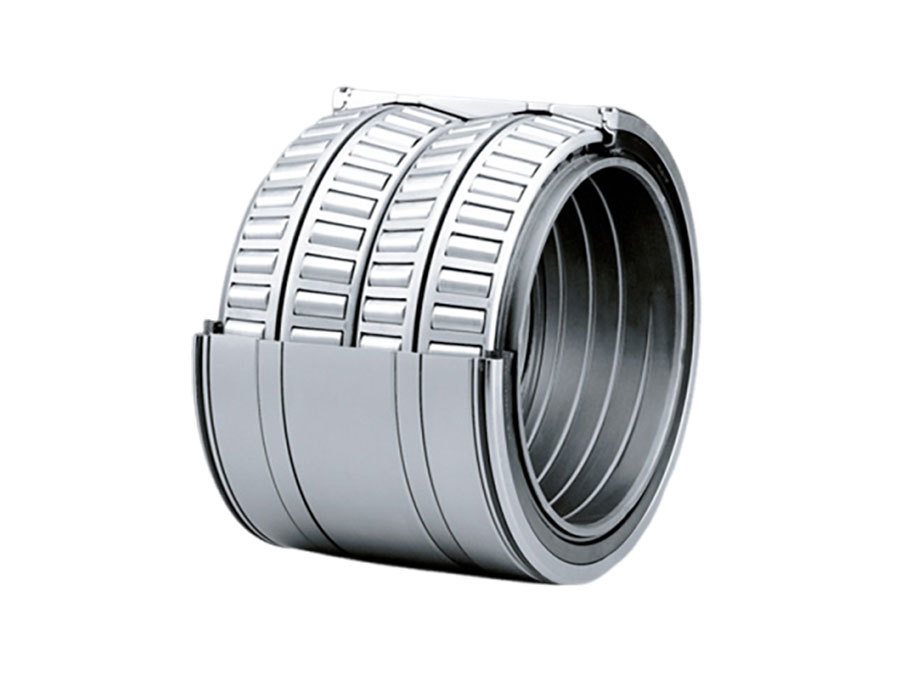-
-
Precision bearings
-
Angular contact ball bearings
-
Crossed roller bearings
-
Tapered roller bearings
-
Slewing bearings
-
Ball screw support bearings
-
Rotary table bearings
-
Thin-wall bearings
-
-
Bearing related
-
Bearing parts
-
Spindle
-
Bearing testing machine
-
Bearing measuring instrument
-
Bearing processing equipment
-
-
What are the selection principles for rolling mill bearings?
Published on:
2025-11-13 16:43
The selection principles for rolling mill bearings are multifaceted, aiming to ensure that the bearings meet the operational requirements of the rolling mill while improving rolling accuracy and equipment reliability. Here are some of the main selection principles:
I. Select bearing type based on rolling mill operating conditions
1. Load Size: Rolling mills generate significant loads during operation, especially cold rolling mills, where the load is 2-5 times higher than that of ordinary bearings. Therefore, it is necessary to select bearing types with high load-bearing capacity, such as four-row cylindrical roller bearings or four-row tapered roller bearings.
2. Operating speed: The operating speed of rolling mills varies greatly; some require high-speed operation, while others are relatively slower. For high-speed rolling mills, bearing types with low friction coefficients and high limiting speeds should be selected, such as deep groove ball bearings and cylindrical roller bearings.
3. Working environment: The working environment of a rolling mill is usually harsh, and impurities such as lubricating fluid and metal shavings can easily enter the bearing. Therefore, it is necessary to select bearings with good sealing performance and wear resistance, and ensure that the bearings have good lubrication conditions.
II. Considering the bearing's precision and rotational accuracy
1. Bearing Precision: Rolling mills, especially cold rolling mills, have high precision requirements for bearings. Precision indicators such as the deviation of the inner diameter of a single plane Δdmp and the radial runout of the inner diameter of the entire bearing assembly Δdia need to be strictly controlled. Generally speaking, the inner diameter deviation of the rolling mill work roll bearing should be controlled within a certain range, and the radial runout of the inner diameter should also meet high precision requirements.
2. Rotational accuracy: The rotational accuracy of a bearing is related not only to its structure, manufacturing precision, clearance, and rigidity, but also to its support structure and installation precision. For applications requiring strict rotational accuracy, such as roll grinding machines and precision cold rolling mills, high-precision bearings should be used, and the manufacturing accuracy, installation accuracy, and rigidity of the shafts and bearing housings that mate with the bearings should be improved accordingly.
III. Consider the ease of installation and disassembly of bearings
Roll mills require frequent roll changes and grinding during operation, so the selected bearings should be easy to install and disassemble. For applications requiring frequent disassembly and maintenance, bearings with separable inner and outer rings and rolling element cage assemblies should be selected, such as four-row cylindrical roller bearings and four-row tapered roller bearings. These bearings allow the bearing components to be installed separately with the roll neck and bearing housing, and then reassembled, greatly improving roll changing efficiency.
IV. Selection Based on Bearing Limiting Speed
The limiting speed of a bearing refers to the limit at which the bearing can rotate continuously without generating friction that would cause it to burn. This value is affected by many factors, including bearing size, precision, load conditions, lubrication method, lubricant quality, and filler quantity. When selecting bearings, it is essential to ensure that the limiting speed of the chosen bearings meets the operational requirements of the rolling mill. This is especially important for high-speed rolling mills.
V. Consider the durability and reliability of the bearings
Rolling mill bearings are subjected to significant impacts and vibrations during operation, necessitating the selection of bearing types with high durability and reliability. These bearings should possess excellent fatigue resistance, wear resistance, and impact resistance to ensure stable operation even in harsh working environments.

In summary, the selection principles for rolling mill bearings include multiple aspects such as selecting the bearing type based on working conditions, considering the bearing's precision and rotational accuracy, considering the ease of installation and disassembly, selecting based on the bearing's limiting speed, and considering the bearing's durability and reliability. Only by fully considering these principles can we ensure that the selected bearings can meet the operating requirements of the rolling mill and improve rolling accuracy and equipment reliability.
For engineers and procurement specialists looking for durable and high-performance rolling mill bearings, ZYSINT Bearing delivers customized solutions engineered for demanding industrial environments. Learn more at www.precision-bearing.com or get in touch with us directly at info@zys.com.cn — we’re ready to help you find the perfect bearing solution for your rolling mill application.
Previous one
Previous one
Latest News
Share your needs with us and get an impressive collaboration and reassuring product.
Headquarter: East Wing Building, No. 121 Wutong Street, High-Tech Industrial Development Zone, Zhengzhou City, Henan Province, China
No. 1 Factory Address: No. 6 Fenghua Road, Luoyang City, Henan Province, China
No. 2 Factory Address: No. 1 Sanxi Road, Science and Technology Industrial Park, Jianxi District, Luoyang City, Henan Province, China
No. 3 Factory Address: Yibin Industrial Technology Park, Yibin District, Luoyang City, Henan Province, China
COOKIES
Our website uses cookies and similar technologies to personalize the advertising shown to you and to help you get the best experience on our website. For more information, see our Privacy & Cookie Policy
COOKIES
Our website uses cookies and similar technologies to personalize the advertising shown to you and to help you get the best experience on our website. For more information, see our Privacy & Cookie Policy
These cookies are necessary for basic functions such as payment. Standard cookies cannot be turned off and do not store any of your information.
These cookies collect information, such as how many people are using our site or which pages are popular, to help us improve the customer experience. Turning these cookies off will mean we can't collect information to improve your experience.
These cookies enable the website to provide enhanced functionality and personalization. They may be set by us or by third-party providers whose services we have added to our pages. If you do not allow these cookies, some or all of these services may not function properly.
These cookies help us understand what you are interested in so that we can show you relevant advertising on other websites. Turning these cookies off will mean we are unable to show you any personalized advertising.




